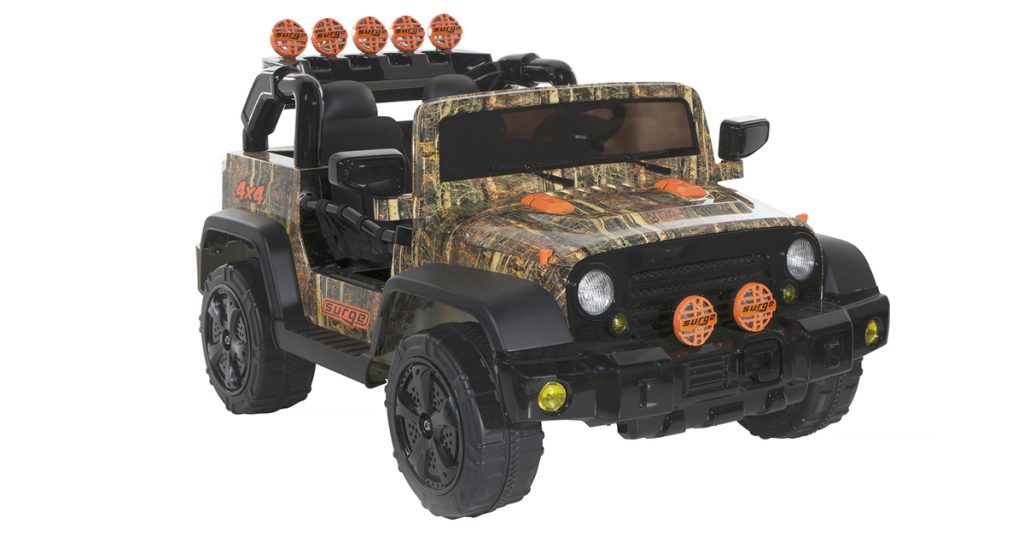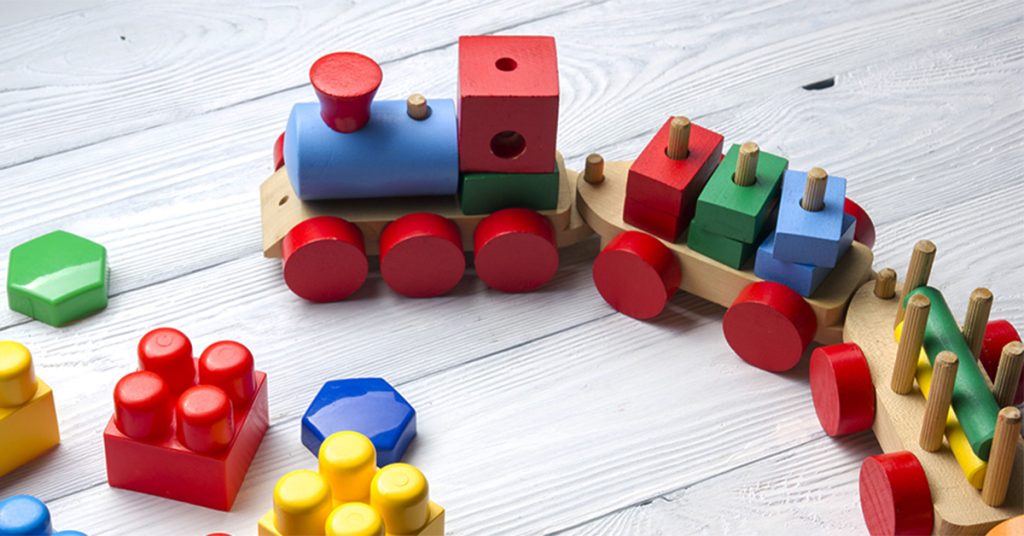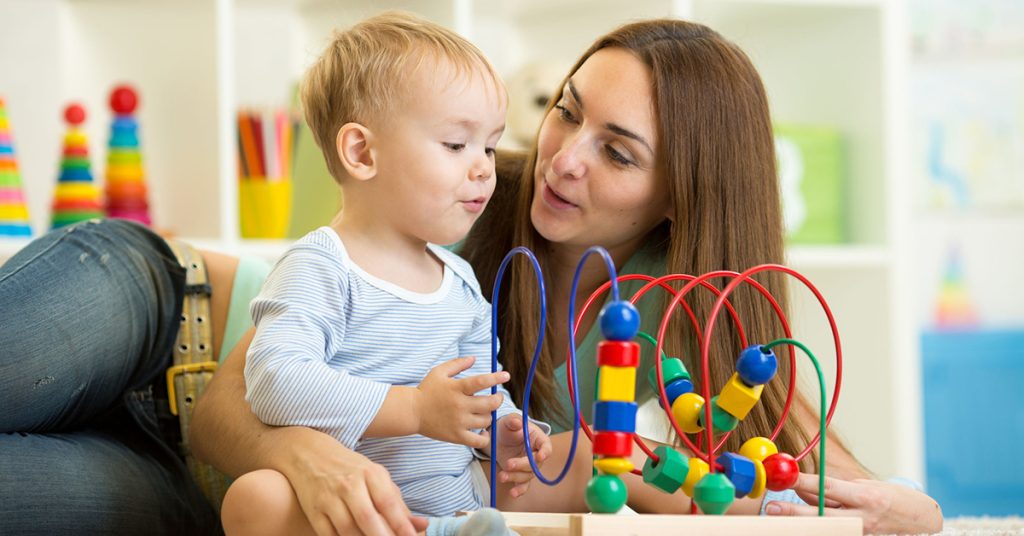Posts Tagged ‘Project KidSafe toy safety ALL’
Hitting the Safety Brake: A Warning About Battery-Operated Ride-On Toys
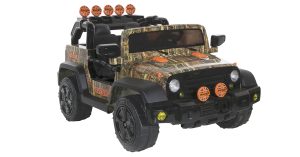
Dynacraft Ride-on Toys recalled 20,000 battery-operated ride-on toys after reports that the pedals were not working in 2017. Always check for product recalls before you buy any holiday toy. Photo credit: Consumer Product Safety Commission notices.
Battery-operated ride-on toys may look like fun holiday gifts. Parents and grandparents even have their choice of models, including the Jeep, Mercedes-Benz and Lamborghini to name a few.
Shoppers can get easily caught up in the “cuteness” factor. It’s not that simple, though. Ride-on toys can be heavy and motorized. Be cautious when buying, even with push or pedal ride-on toys, because you are trusting these toys to support your child.
The Consumer Product Safety Commission (CPSC) has been working to improve safety for ride-on toys, because children have suffered injuries and even deaths. In 2016, three children died in riding toys in toy-related injuries, all encounters with motor vehicles (Source: CPSC). Riding toys, motorized and non-motorized, were associated with the highest number of toy-related deaths that year – or 43 percent.
Before you buy, please step on the brakes and consider our safety tips.
Potential Harm: Motor Vehicles and Fires
Why are riding toy cars so dangerous? The greatest danger is children can be hit by adult-sized vehicles. But motorized toy cars can also overheat, as a North Andover family learned last August. A mother had the terrifying experience of having to pull her children out of a toy car, just after smoke started coming from the hood and before the flames. Other potential issues are children can attempt to stand and cars can tip, resulting in head injuries. Remote controls can provide parents a false sense of security. Parents may have more control just pushing their children in a non-motorized toy.
Safety Tips for Buying Ride-on Toy Cars
- Steer clear of motorized, battery-operated toy cars. Consider buying a tricycle or another non-motorized toy instead.
- If you buy a battery-operated toy car, look for the age recommendation. Many of these toys are recommended for children age 2+, which we feel is too young. But the age recommendation is a starting point for many families.
- Check the label to see if the riding toy meets the CPSC’s toy safety standards. In 2016, the federal toy safety standard, ASTM F963, was specifically updated to address overload, stability and restraints on riding toys.
- Check if the toy car has been recalled on the CPSC website.
- It’s not just toy cars. Any riding toy with a motor can malfunction. Last March, the CPSC recalled these Radio Flyer electric wagons due to motor problems.
- Read the product specifications and instructions online before purchasing. Consider whether you have the time for this type of toy.
- Test the riding toy before your child rides.
- Always supervise your children when they ride. Stay on the driveway and sidewalks near your home. Fenced in areas, such as backyards, are best if the product is designed for use on grassy surfaces.
- Protect your child’s head with a bicycle helmet.
- Follow instructions for properly seating your child. Ride one child at a time.
- Find a safe place to park the riding toy. Commit to properly securing it after each use.
- Keep the box. When your child outgrows the riding toy, remove it from your home.
Free Legal Consultation: 800-379-1244
For more than 25 years, Breakstone, White & Gluck has represented those who have been injured or killed by defective products which should have never been sold. This holiday season, our Boston personal injury lawyers are committed to helping consumers make informed buying decisions to prevent toy-related injuries.
If you have been injured in a motorized toy car accident or any other type of accident, our attorneys offer a free legal consultation and can help explain your rights for seeking potential compensation. Call 800-379-1244 or 617-723-7676 or use our contact form.
The 10 Worst Toys of 2018
W.A.T.C.H. has released its annual nominees for the 2018 Worst Toys list. The Boston non-profit warns shoppers to steer clear of the following toys this holiday season:
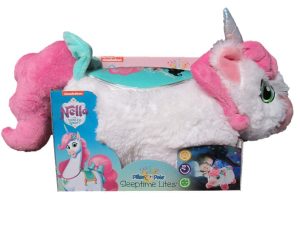
Photo courtesy: W.A.T.C.H. 2018 Worst Toys report.
Nickelodeon Nella Princess Knight Pillow Pets Sleeptime Lites
Parents should never leave infants in their cribs with toys, especially those with small pieces or strings. This toy is marked for ages 0+, for use as a nightlight or bedroom toy. While it does carry some warning labels – warning parents not to leave it in the crib or let children play with it unattended – this isn’t enough to protect children. W.A.T.C.H. cited this and other hazards, including small accessories and a warning about batteries which can leak. This toy is being sold online through Target.com and Google Express, as well as in Target stores.
Nerf Vortext VTX Praxis Blaster
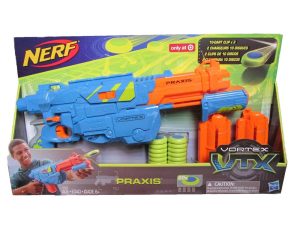
Photo courtesy: W.A.T.C.H. 2018 Worst Toys report.
Nerf toys have received bad press for causing eye injuries. In this case, the Nerf gun is recommended for users age 8 and older and can shoot 10 discs in a row. W.A.T.C.H. calls this a potential hazard for eye and facial injuries. The blaster is sold at Target. Target.com, Amazon.com, Walmart.com, Ebay.com and Bonanza.com.
Marvel Black Panther Slash Claw
These make the list because they can cause injuries and can encourage hitting. The claws are encouraged for children age 5 and older and the packaging states children can “slash” like the Black Panther.” At the same time, the packaging also advises children not to swing at other people or animals and to steer clear of breakable objects. If children use the toy, they are likely to break all those warnings, which is why W.A.T.C.H. included it this year.
Power Rangers Super Ninja Steel Superstar Blade
This is a sword-like toy and made the list for poor taste and the potential for facial and other impact injuries.
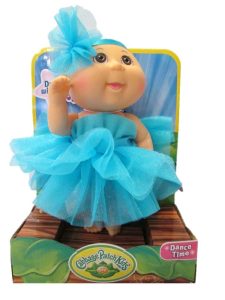
Photo courtesy: W.A.T.C.H. 2018 Worst Toys report.
Cabbage Patch Kids Dance Time Doll
You may think this is a sweet, fun gift. But the toy has a removable headband, which W.A.T.C.H. says can be ingested. The toy is marketed for children age 2+ and is sold at Target, Target.com, CabbagePatchKids.com, Bonanza.com and Blinq.com.
Zoo Jamz Xylophone
This Vtech brand toy made the list for presenting a potential choking hazard. A young child could put the drumstick handle in their mouth and block their airway, W.A.T.C.H. says. The product is designed for children age 1 1/2 to 4 years old. It is sold at Walmart, Walmart.com, as well as Amazon and other retailers.
Nici Wonderland Doll: Miniclara the Ballerina
This pink ballerina and her kitten are not safe, W.A.T.C.H. says. There is nothing wrong with the little girl, but the kitten can become detached and a child could ingest it. A few of the retailers selling the toy: Amazon.com, Walmart and Barnes & Noble.com.
Stomp Rocket Ultra Rocket
This product is for children age 6 and older. Children are supposed to step onto the pedal to launch the rocket. The rockets can go high – up to 200 feet. W.A.T.C.H. recommended parents keep it off their holiday shopping lists this year, saying it can cause serious eye or face injuries.
Cutting Fruit
Magnetic fruit toys with a hard plastic knife are not a safe gift, W.A.T.C.H. says. The set is marketed for children age 2+, even though the knife can be used to cause puncture wounds.
Chien Á Promener Pull Along Dog
W.A.T.C.H. says this toy falls between regulations and safety. Manufacturers can only market toys with strings under 12 inches for use in cribs and playpens. Pull toys don’t have the same restriction and the result is a toy with a 19-inch draw string can legally be sold to children. The age recommendation on this product is only 1-3 years old. There are no safety warnings. It is available on Amazon.com, Magic Beans and Mbeans.com.
More information on the 10 Worst Toys of 2018 list.
About Breakstone, White & Gluck
Breakstone, White & Gluck is a Boston law firm specializing in personal injury and product liability claims. We represent those who have been injured by the negligence and wrongdoing of others. If you have been injured, it is important to learn your legal rights for seeking compensation to cover lost wages, medical care and other financial losses. For a free legal consultation, contact the Boston personal injury lawyers of Breakstone, White & Gluck at 800-379-1244 or 617-723-7676 or use our contact form.
Protect Your Children from Lithium Button Batteries
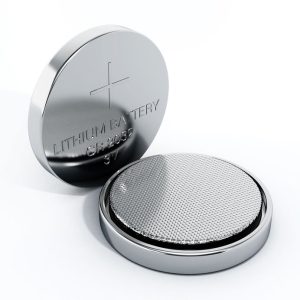
Beware of Lithium button batteries this holiday season. These are a serious danger to young children, who can swallow them and suffer serious internal injuries.
New parents quickly learn the secret to surviving the holiday season: stock up on batteries. While all batteries should be handled with care, we want to share a few safety tips for handling lithium button batteries.
Small, just the size of a button, these batteries are easy to overlook when you child-proof your home. But button batteries are a giant danger. A child can find one and put in their mouth. Without proper medical care, within hours, a child can suffer severe burns to their esophagus.
In 2010, researchers at Children’s Hospital of Philadelphia tracked more than 3,400 cases of children who swallowed button batteries. The hospital reports 15 children have died and another 80 children have suffered permanent injuries after ingesting button batteries.
Our tips to protect your children:
- Read product labels before you purchase. You may not realize some toys or products have lithium batteries because you do not have to install them. Likewise, products you may guess have lithium batteries may not. It is essential to read and ask questions.
- Know where lithium button batteries are in your home. You can find them in certain toys and baby monitors, as well as remote controls, garage door openers, car keys and bathroom scales. You may also wear a watch powered by a lithium battery.
- Remove products containing lithium batteries from your home. If you really need these products, at least secure them out of your child’s reach.
- Be suspicious of holiday gifts and trinkets. Holiday cards, electric candles and interactive gifts, such as musical stuffed animals, may have lithium batteries. Stop these products before they come into your home. As for holiday cards, enjoy them and discard them the same day. If you keep them, remove the battery.
- Research your holiday gifts. Go online and search for product recalls involving any toy you wish to purchase. You can visit the CPSC website. Search for both the product you are interested in buying and batteries.
- Warn your family and friends. With Thanksgiving just a few weeks away, now is an ideal time to share safety information with your loved ones. Urge family members, friends, grandparents and caregivers to carefully select holiday gifts, make use of toy recall alerts and move products with button batteries out of your child’s reach.
What to do if a child swallows a lithium button battery
If your child ever swallows a button battery, go to the hospital immediately. The sooner a child receives medical attention, the better. A child can suffer a serious internal injury within hours of swallowing a button battery so every second counts.
We hope your child is never injured. But it is critical to understand the symptoms when children swallow button batteries. Parents may not see a child swallow a button battery or may not even know a button battery was in their child’s reach.
These are common symptoms
- Decreased eating or drinking
- Difficulty swallowing
- Vomiting
- Vomiting blood
- Chest pain or discomfort
- Abdominal pain, blood in saliva or stool
- Drooling
- Crying
If you suspect your child swallowed a button battery, the Children’s Hospital of Philadelphia advises parents to seek immediate medical treatment and to refrain from giving the child medications, food or anything to drink. Never attempt the Heimlich maneuver either. This can worsen the injury.
About Breakstone, White & Gluck and Our Commitment to Safety
This holiday season, Breakstone, White & Gluck is committed to sharing tips on toy safety. Every toy, every product you buy should be safe to use, but this is not always the case. Because of this, our Boston product liability lawyers want to share tips from our experience to help parents and grandparents make safe buying decisions.
Breakstone, White & Gluck is a top-rated Boston personal injury law firm, with lawyers who have been consistently recognized for excellence over the past 26 years, including by Top 100 New England Super Lawyers, Best Lawyers in America and Martindale-Hubbell. Our attorneys have also been recognized for starting our Project KidSafe campaign and working to help prevent injuries and deaths by providing safety education to families. To date, we have donated over 25,000 bicycle helmets to children, with a goal of preventing head injuries.
Learn more about Breakstone, White & Gluck: www.bwglaw.com. If you have been injured, our attorneys offer a free legal consultation and can help explain your rights for seeking potential compensation. Call 800-379-1244 or 617-723-7676 or use our contact form.
Additional Resources for Parents
We encourage parents to watch these videos.


